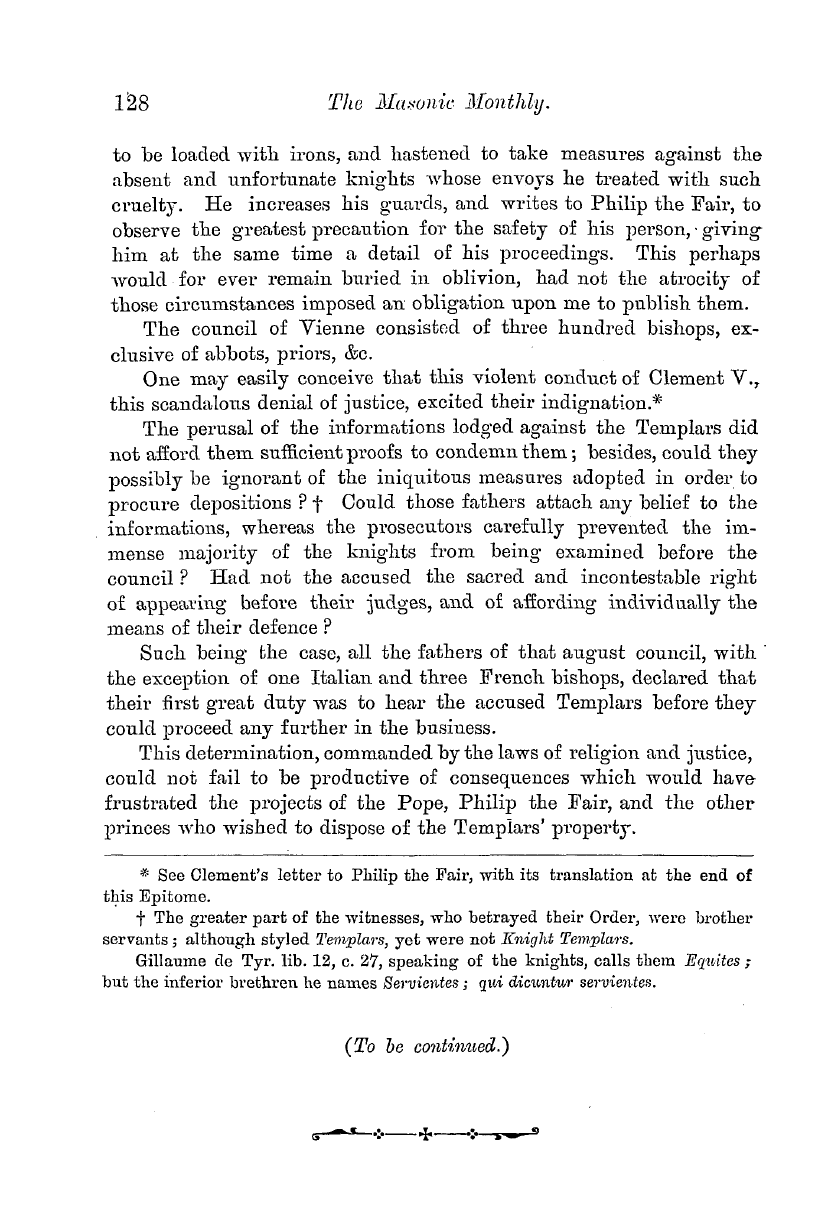Note: This text has been automatically extracted via Optical Character Recognition (OCR) software.
The Legend Of The Introduction Of Masons Into England.
may be the opinion now as to this connexion , we can hardly overlook the fact that it was the belief up to a comparatively recent date . In my last article * a long extract was printed , giving what we may fairly take as being the history , or rather legend , of the introduction of masons into England as generally accepted in the year 1720 ,
but a few years after the formation of a Grand Lodge , by the Four old Lodges . This extract from Stow , based as will be seen on the Chronicles , gives to the Romans the credit of introducing the use of Stone Wallsf into England about the year A . D . 434 . The Saxons , we are
told , " used but Wooden Buildings , " and " Masons and Workmen in Stone" i . e . "Artificers of Stone Houses , Painters and Glaziers , " were not " brought hither " until the year A . D . 680 . J A church was then built in the " Roman manner . " But , to return to the Chronicles , Gildas , who died about A . D . 570 , mentions § that the Island of Britain is " famous for eight and twenty
cities , and is embellished by certain castles , Avith walls , towers , well barred gates , and houses with threatening battlements built on high . " And again || that the Britons built a wall at the recommendation of the Romans across the island from one sea to the other . " This wall , however , " ( he writes ) " being made of turf instead of stone , was of
no use to that foolish people , who had no head to guide them . " The wall having- failed to protect them against the invasion of the Picts and Scots , the Britons again invited the Romans to come over and protect them against their enemies . Before finally leaving the Britons to defend themselves , * ff the Romans " with the help of the miserable
natives , built a wall different from the former , by public and private contributions , and of the same structure as Avails generally , extending in a straight line from sea to sea , between some cities which , from fear of their enemies , had there by chance been built . " " They erected towers at stated intervals commanding a prospect of the sea , " on the South coast of England , where their ships lay . **
Note: This text has been automatically extracted via Optical Character Recognition (OCR) software.
The Legend Of The Introduction Of Masons Into England.
may be the opinion now as to this connexion , we can hardly overlook the fact that it was the belief up to a comparatively recent date . In my last article * a long extract was printed , giving what we may fairly take as being the history , or rather legend , of the introduction of masons into England as generally accepted in the year 1720 ,
but a few years after the formation of a Grand Lodge , by the Four old Lodges . This extract from Stow , based as will be seen on the Chronicles , gives to the Romans the credit of introducing the use of Stone Wallsf into England about the year A . D . 434 . The Saxons , we are
told , " used but Wooden Buildings , " and " Masons and Workmen in Stone" i . e . "Artificers of Stone Houses , Painters and Glaziers , " were not " brought hither " until the year A . D . 680 . J A church was then built in the " Roman manner . " But , to return to the Chronicles , Gildas , who died about A . D . 570 , mentions § that the Island of Britain is " famous for eight and twenty
cities , and is embellished by certain castles , Avith walls , towers , well barred gates , and houses with threatening battlements built on high . " And again || that the Britons built a wall at the recommendation of the Romans across the island from one sea to the other . " This wall , however , " ( he writes ) " being made of turf instead of stone , was of
no use to that foolish people , who had no head to guide them . " The wall having- failed to protect them against the invasion of the Picts and Scots , the Britons again invited the Romans to come over and protect them against their enemies . Before finally leaving the Britons to defend themselves , * ff the Romans " with the help of the miserable
natives , built a wall different from the former , by public and private contributions , and of the same structure as Avails generally , extending in a straight line from sea to sea , between some cities which , from fear of their enemies , had there by chance been built . " " They erected towers at stated intervals commanding a prospect of the sea , " on the South coast of England , where their ships lay . **































































